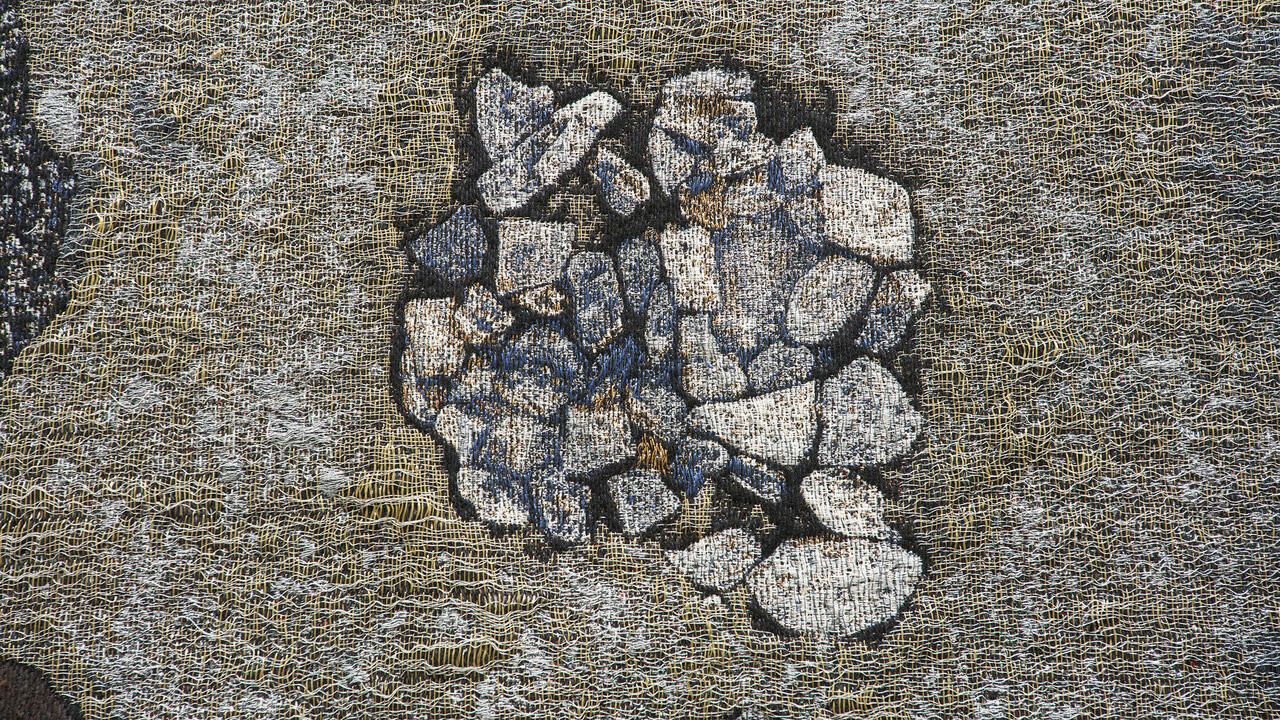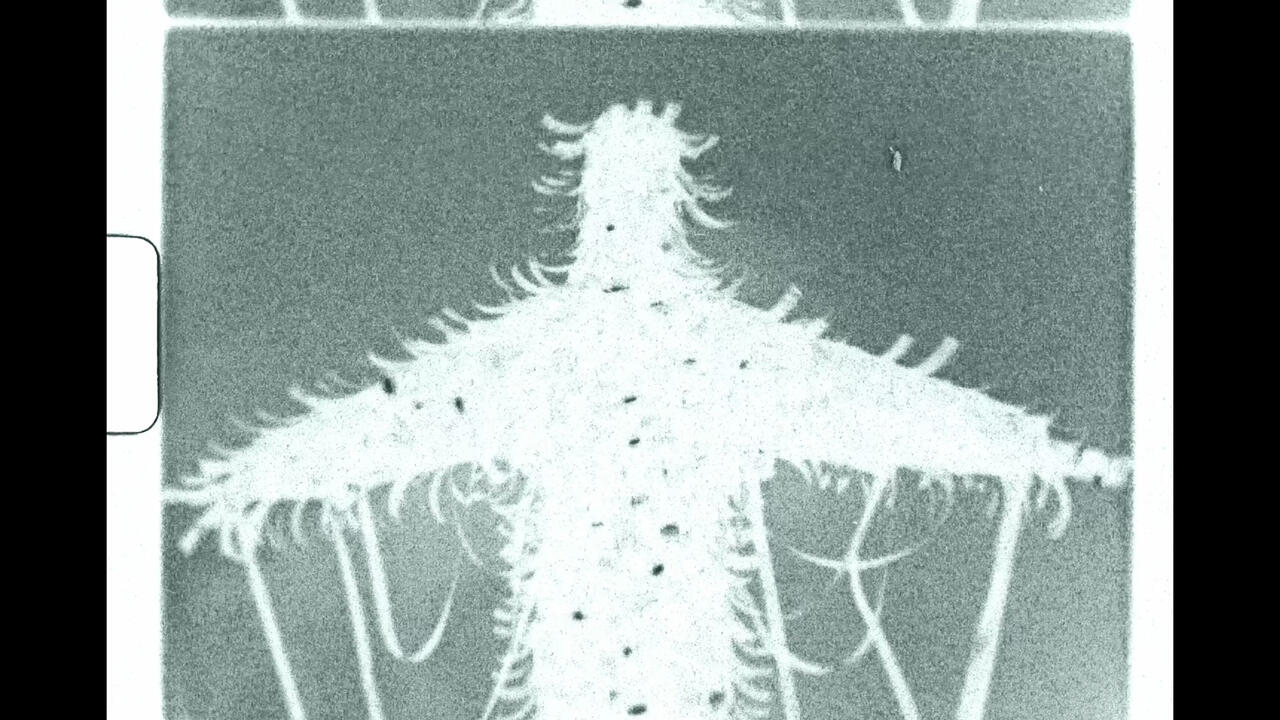The Formulaic Juxtapositions of Jasper Johns's 'Mind/Mirror'
At the Whitney Museum of American Art and the Philadelphia Museum of Art, a massive survey, focusing on the famed artist's legacy, bypasses new readings of his oeuvre
At the Whitney Museum of American Art and the Philadelphia Museum of Art, a massive survey, focusing on the famed artist's legacy, bypasses new readings of his oeuvre

In ‘Jasper Johns: Mind / Mirror’, two major museums – the Whitney Museum of American Art and the Philadelphia Museum of Art (PMA) – decline to offer fully individual perspectives on the consecrated painter, opting instead to mirror their installations with variations riffing on themes in Johns’s work. A gallery at the Whitney focuses on dreams, while a corresponding gallery at the PMA focuses on nightmares; the Whitney discusses the American South’s influence on Johns, the PMA Japan’s; and so on. In a New York Times profile of Johns, published as a lead-up to the exhibition, the artist’s biographer, Deborah Solomon, stressed the conflict that arose from competing curatorial visions but, ultimately, the differences a general audience will perceive between both presentations are minor, and likely to be insignificant given the lapse they’ll experience between visiting both venues. Why, then, dedicate so much real estate at two world-class museums to an artist already known for his repetition and self-quotations?

One answer is the fallacy of imitative form. The curatorial conceit mimics Johns’s work, which is rife with multiples: mirrors (literal and depicted), doubled or tripled motifs, stamps and casts and reproductions. The Whitney approaches Johns chronologically, beginning with his iconic series of flag paintings – including Three Flags (1958), usually anchoring a permanent display marking the end of abstract expressionism – as well as his targets and maps, all of which he continues to make today. The museum notes Johns’s interest in how targets direct sight and limit attention, and cites his oft-quoted line that ‘a painting of a flag or target could be seen both as the depiction of something and as the thing itself’, which effectively relays both the exterior and interior functions of his work. Johns compels you to acknowledge your experience of the world as an experience of images, and conditions you to understand these signs as fungible in function and malleable in meaning.
Seen this way, the two exhibitions take on different resonances through context and juxtaposition. At the PMA, an encyclopaedic museum whose collection spans continents and millennia, Johns’s material experimentation appears as an inevitable result of the American project, an invention of the country’s emergent, globally minded, mid-century intelligentsia. Curated by Carlos Basualdo, that museum’s presentation of Johns’s ‘Usuyuki’ prints (1977–79), inspired by Japanese kabuki, is a lovely meditation on fleeting beauty. Meanwhile, given the Whitney’s purview of contemporary American art, Johns takes on the air of a radical. Its corresponding gallery, curated by Scott Rothkopf, focuses on the ‘Savarin’ series (1960–82): 17 ‘Usuyuki’ monotypes of a single composition anchored by a 1960 bronze cast of a coffee can meticulously painted to resemble the real thing. Beauty, it suggests in ironic tones, is a manufactured product, standardized and artificial. At the Whitney, Johns represents schism; at the PMA, continuity.

This leads to the second answer, which is both more complicated and more banal, but ultimately more convincing. Like a trick mirror, each exhibit reveals something about its respective institution’s ideology that I imagine they’d rather remained hidden. Johns is as central to the Whitney’s narrative of postwar American art as Henri Matisse is to the Museum of Modern Art’s version of Euro-American modernism, while the PMA offers a compelling, if obvious, case for considering Johns the neo-dada heir to Marcel Duchamp, whose most significant works comprise the museum’s impressive Louise and Walter Arensberg Collection. For added context, consider that the shows’ organization spanned the Black Lives Matter protests of 2020, as well as (ongoing) attempts by both museums to bust newly formed unions.
A look down the East Coast reveals the cynical calculus American museums are making. The Guggenheim Museum’s yearlong exhibition ‘Vasily Kandinsky: Around the Circle’ (2021–22) creates a literal hierarchy in the rotunda, with the Russian mystic at its peak, supplemented by a rotating roster of three ostensible protégés: Etel Adnan, Jennie C. Jones and Cecilia Vicuña. Finally, factor in the National Gallery of Art’s decision to delay its retrospective of Philip Guston indefinitely because they feared the criticism inherent in his figures resembling Klansmen would be lost on audiences. Each of these exhibitions is part of a conservative tactic designed to reinforce the supremacy of entrenched artists – and, in fact, specific holdings – whose status in the consecrated halls is perceived to be threatened.

One particularly illuminating example is the Whitney’s gallery dedicated to Johns’s return to South Carolina. Johns was born in Georgia in 1930 and lived in South Carolina until 1948, when he moved to New York. In 1954, he began a seven-year relationship with Robert Rauschenberg. It was during this time that Johns drafted the bulk of his symbolic arsenal: he painted his first flag in 1954 and both his first target and first map one year later. In 1961, following his split with Rauschenberg, Johns returned to South Carolina, settling in Edisto Beach, midway between Charleston and Savannah. ‘The seaside locale was known for its natural beauty’, the Whitney notes on a wall label, ‘and the vibrant Black cultural legacy of the Gullah Geechee people, but it was also still under the sway of violent and oppressive Jim Crow laws’. With segregation and the Gullah Geechee – descendants of enslaved people who, due to the remoteness of the state’s coastal plantations, retained many aspects of West and Central African culture – summarily dispatched as curatorial context, the exhibition turns toward the work Johns was actually making: ‘recollections of his family and childhood’. In South Carolina, Johns turned even further inward. He quoted his childhood home’s floor plan and family photographs. He made doleful works featuring dangling objects (In Memory of My Feelings—Frank O’Hara, 1961, and Studio, 1964), which later grew into his ‘Catenary’ series (1996–ongoing) of paintings with suspended string. He crafted a box of sand imprinted with Frank O’Hara’s footprint (Memory Piece [Frank O’Hara], 1970). He made homages to Duchamp (Flashlight I, 1958). The gallery unintentionally exhibits the limits of Johns’s subversive references to the material culture around him. What his favourite icon – the US flag – may have meant within this oppressive milieu is left unexamined.

Johns made some truly marvellous art, on view in both cities, and either display alone sufficiently proves his merits. His prolonged attention to a relatively small set of motifs led him to constantly deconstruct and reinvent his process, which makes for thrilling pacing in an exhibition and highlights the magnificence of the sparks he cast in other artists. But it also reveals a painter propelled by centripetal momentum. The exhibits at both the Whitney and the PMA seem keenly aware that Johns’s legacy is more examined than his art, which may have informed the decision to pack the galleries and gloss over some of the more interesting, if speculative, interpretations of his early work. (Johns’s status as a rare, successful, mid-century gay artist is bolstered, in part, by psychosexual readings of the relationships between him, Rauschenberg and Cy Twombly, as well as Freudian interpretations of Johns’s targets in particular.) Still, Johns’s self-referentialism makes it impossible to disguise the fact that his reputation is largely contingent upon discoveries he made early in his career. We might consider it a mark of their significance that they continue to sustain the painter in his 91st year but, in ‘Mind / Mirror’, Johns the man is treated in service to the notion that his image burnishes institutions.
Jasper Johns's 'Mind/Mirror' is on view at the Whitney Museum of American Art, New York, and the Philadelphia Museum of Art, until 13 February 2022.
Main image: Jasper Johns, According to What (detail), 1964, oil, charcoal, and graphite on canvas with objects (six panels), 2.2 × 4.8 m. © 2021 Jasper Johns / VAGA (ARS), New York. Courtesy: The Philadelphia Museum of Art; photography: Joseph Hu
























